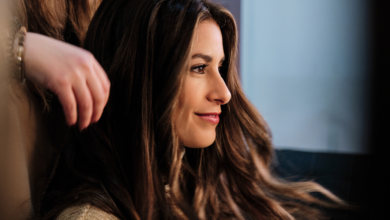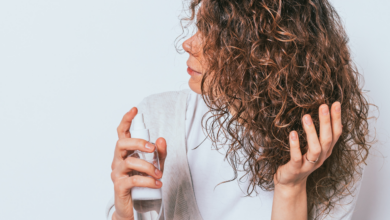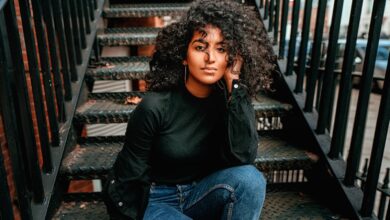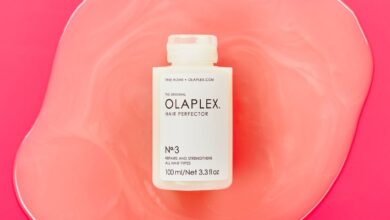
Are you ready to take your hairstyle game to the next level? Look no further than “Undercuts Unveiled: A Deep Dive By Stylish.ae Professionals.” Get ready to be in awe as our team of experts reveal the secrets behind the trendiest hairstyles of the season. Say goodbye to boring haircuts and hello to a whole new level of style. Brace yourself, because “Undercuts Unveiled” is about to revolutionize the way you rock your locks.

1. The History of Undercuts
1.1 The Origins of Undercuts
The undercut hairstyle has a fascinating history that dates back to the early 1900s. It originated as a practical solution to keep hair off the face while maintaining a cool and stylish look. It was popularized by the working-class men in Europe and the United States, who often had to wear hats for their professions. By shaving or closely trimming the hair on the sides and back of the head, the undercut provided a clean and slick appearance that easily accommodated a hat.
1.2 Evolution of Undercut Styles
Over the years, the undercut has evolved into various styles, each with its own unique twist. From the classic undercut to the modern variations seen today, this hairstyle has continued to captivate individuals seeking a bold and edgy appearance. The 1920s introduced the slicked-back undercut, which became a symbol of rebellion and sophistication. In the 1950s, the pompadour undercut gained popularity, showcasing a combination of classic and contemporary elements. As the years progressed, the disconnected undercut emerged, featuring a stark contrast between the closely shaved sides and the longer hair on top.
1.3 Cultural Significance of Undercuts
Beyond its practical origins, the undercut also holds cultural significance. It has been associated with various subcultures and movements throughout history. In the punk and rockabilly scenes of the 1970s and 1980s, the undercut became a symbol of rebellion and nonconformity. It represented a desire to challenge societal norms and embrace individuality. Today, the undercut continues to be embraced by a wide range of individuals, from fashion-forward trendsetters to musicians and athletes, serving as a reflection of personal style and expression.
2. Understanding Undercuts
2.1 What is an Undercut?
An undercut is a hairstyle that features short or shaved sides and back, with longer hair on the top. It creates a striking contrast between the closely cropped sections and the voluminous, styled hair on the upper part of the head. The undercut can be customized to suit different face shapes, hair types, and personal preferences, making it a versatile choice for both men and women.
2.2 Different Types of Undercuts
2.2.1 Classic Undercut
The classic undercut maintains a relatively even length on the sides and back, while leaving the top section longer. This style offers a timeless and clean appearance that can be easily dressed up or down for various occasions.
2.2.2 Disconnected Undercut
The disconnected undercut is characterized by a distinct contrast between the shaved or closely trimmed sides and the longer hair on top. This bold and eye-catching style creates a dramatic effect and allows for more versatility in styling.

2.2.3 Undercut Fade
The undercut fade seamlessly blends the shaved or trimmed sections into the longer hair on top using a gradual tapering technique. This creates a smooth and seamless transition, offering a more polished and sophisticated look.
2.2.4 Pompadour Undercut
The pompadour undercut combines the classic pompadour style with the shaved or closely cropped sides and back of an undercut. The result is a modern and stylish twist on a timeless classic, with the voluminous hair on top styled in a pompadour manner.
2.3 Factors to Consider for Undercuts
When deciding on the perfect undercut style, there are several factors to consider that can greatly influence the overall result.
2.3.1 Hair Texture
Hair texture plays a crucial role in determining which type of undercut will work best for an individual. Straight hair tends to fall more naturally and can achieve a sleeker look, while wavy or curly hair can add texture and volume to the style.
2.3.2 Face Shape
Different face shapes pair well with different undercut styles. For example, a square face shape may benefit from a style that softens the angles, while an oval face shape can pull off a wide range of undercut variations.
2.3.3 Hair Length
Hair length also influences the possibilities for a successful undercut. While shorter hair is more commonly associated with undercuts, longer hair can be carefully styled and layered to create unique and eye-catching effects.
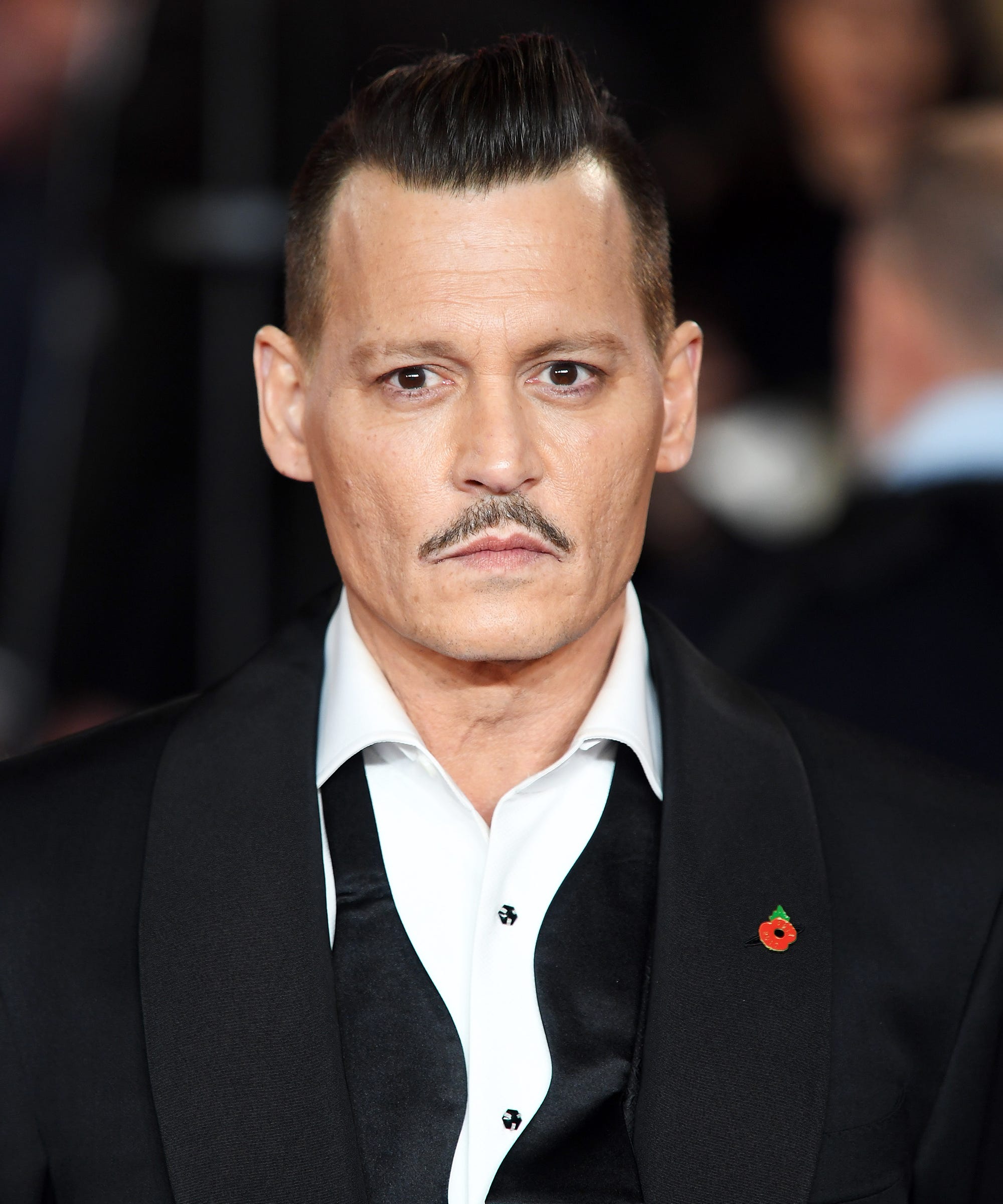
3. How to Achieve the Perfect Undercut
3.1 Choosing the Right Hairstylist
To achieve the perfect undercut, it is essential to find a skilled hairstylist who specializes in this particular style. Look for recommendations, check online portfolios, and schedule consultations to discuss your desired look and ensure that the stylist understands your vision.
3.2 Preparing for the Undercut
Before getting an undercut, there are a few important considerations to keep in mind.
3.2.1 Deciding on the Length
Determine the desired length for the longer hair on top and discuss it with your hairstylist. Consider the maintenance and styling challenges associated with different lengths to ensure a style that suits your lifestyle.
3.2.2 Washing and Drying the Hair
Ensure that your hair is clean and dry before the haircut appointment. Wash and condition your hair as usual the day before to allow it to settle into its natural state. This will help the hairstylist accurately assess your hair type and texture.
3.3 The Undercut Process
Once you’re prepared, your hairstylist will guide you through the step-by-step process of achieving the perfect undercut.
3.3.1 Sectioning and Clipping
The hairstylist will begin by sectioning the hair and separating the longer top section from the shorter sides and back. Clips may be used to hold each section in place, ensuring precision during the trimming process.
3.3.2 Using the Right Tools
The correct tools, such as clippers and scissors, will be used to achieve the desired length and shape. The hairstylist will skillfully blend the different sections, meticulously trimming and shaping the hair to create the perfect undercut style.
3.3.3 Styling Techniques
After the haircut, the hairstylist will provide guidance on styling techniques to enhance the overall look. This may include using styling products such as pomades, waxes, or hairsprays to add texture, hold, and shine to the hair.

4. Styling Options for Undercuts
4.1 Classic Undercut Styling
For a classic undercut, consider styling the longer hair on top into a sleek and sophisticated look. Use a comb or brush to create a sleek side part or a slicked-back style, highlighting the clean lines and structured appearance of the undercut.
4.2 Modern Undercut Variations
4.2.1 Textured Undercut
For a more contemporary and casual look, opt for a textured undercut. Use a styling product to add texture and create a messy, tousled hairstyle that showcases movement and individuality.
4.2.2 Slicked-Back Undercut
A slicked-back undercut exudes elegance and confidence. Apply a water-based pomade or hair gel to achieve a sleek, polished look. Use a comb or your fingers to comb the longer hair back, revealing the sharp contrast between the shaved sides and the styled top.
4.2.3 Messy Undercut
Embrace a carefree and edgy vibe with a messy undercut. Apply a texturizing product and tousle the hair to create a disheveled yet intentional style. This look is perfect for those seeking an effortlessly cool aesthetic.
4.3 Accessories and Products for Undercuts
To further enhance your undercut style, consider incorporating accessories and styling products that complement your desired look. From headbands and bandanas to pomades and hairsprays, there are countless options to add a personal touch and achieve the desired effect.

5. Maintaining and Growing Out Undercuts
5.1 Tips for Maintaining Undercuts
To keep your undercut looking fresh and stylish, consider implementing the following maintenance tips:
5.1.1 Regular Trims
Schedule regular haircuts to maintain the shape and length of your undercut. This will prevent the hair from growing too long on the sides and back, ensuring that the desired contrast is maintained.
5.1.2 Proper Hair Care Routine
Adopt a hair care routine that suits your hair type and the specific needs of your undercut. Use appropriate shampoos, conditioners, and styling products to maintain the health and appearance of your hair.
5.2 Growing Out an Undercut
If you decide it’s time for a change and want to grow out your undercut, there are strategies to make the transition smoother.
5.2.1 Styling During the Grow-Out Phase
Experiment with different styling techniques to disguise the growing-out phase. Consider using hair accessories, such as headbands or scarves, to tame and control the hair as it grows longer.
5.2.2 Transitioning to a New Hairstyle
Consult with your hairstylist on suitable hairstyles that can seamlessly transition from an undercut. They will be able to offer advice and suggestions based on your hair length, texture, and personal preferences.
6. The Impact of Undercuts on Personal Style
6.1 Self-Expression Through Undercuts
Undercuts have become more than just a trend; they have become a powerful form of self-expression. The ability to choose from various styles and customize them to reflect one’s personality has made undercuts a popular choice among those who wish to make a statement and confidently embrace their individuality.
6.2 Undercuts as Fashion Statements
Undercuts have gained recognition in the fashion realm for their bold and edgy appeal. They have been embraced by designers, models, and fashion enthusiasts as a way to push boundaries and showcase creativity. From the runway to everyday street style, undercuts have made their mark as a fashion statement that exudes confidence and style.
6.3 Undercuts in Pop Culture
Pop culture has greatly influenced the popularity of undercuts. From actors and musicians to professional athletes, individuals in the spotlight have showcased their unique interpretations of this iconic style. Undercuts have appeared in music videos, movies, and TV shows, leaving an indelible mark on popular culture and inspiring countless individuals to embrace this trend themselves.
In conclusion, undercuts have a rich history, diverse styles, and a significant impact on personal style and popular culture. Understanding the different types of undercuts, choosing the right hairstylist, and maintaining and styling the hair are all key elements in achieving the perfect undercut. Whether you’re looking for a classic, modern, or unconventional style, the undercut offers endless possibilities for self-expression and fashion-forward looks. Embrace the boldness of the undercut and unleash your personal style with confidence.
Rocking The Undercut: Tips, Tricks, And Inspirations(Opens in a new browser tab)

